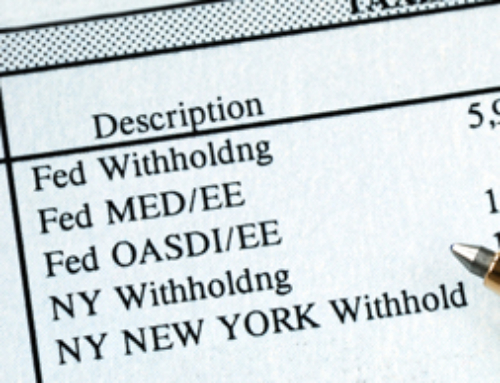 It’s Time to Review Your Payroll Withholding
It’s Time to Review Your Payroll Withholding
Recently, I visited my friends at the IRS for our Stakeholder Liaison meeting. This group of representatives from a variety of tax associations is privileged to exchange ideas with the IRS. The IRS updates us on current changes, laws, and procedures—and solicits suggestions for simplifying or improving procedures. The IRS also alerts us to problems it is seeing in the system.
People Were Shortchanged Last Year
The main issue in August was taxpayer withholding shortfalls on the 2009 tax returns because of the Making Work Pay tax credit. You probably noticed a slight increase in your take-home pay last year. You probably didn’t realize it was going to cause you to end up owing the IRS money.
As Gomer Pyle used to say, “Surprise, surprise, surprise!” Enough people were affected by this sudden balance due that the IRS issued an announcement to help. While the IRS won’t pay your taxes due, it will waive your underpayment penalty. Hey! That’s better than nothing, right?
Use Form 2210. In part II, check box A, requesting a waiver of the entire penalty. Fill out part I. Include a cover letter explaining that the penalty is the result of the Making Work Pay credit.
Don’t Get in Trouble This Year
To avoid having the same problem this year (since the IRS doesn’t promise to waive the penalty again), do a little planning. Review your pay stub to see if you will have enough withholding to cover all of your 2010 tax liability.
In fact, while you’re at it, make a list of taxable income you receive without withholding in 2010. That would include unemployment income, dividends, interest, lottery, and gambling winnings. It may include some freelance income or income from your side business. You might be getting a pension—or even Social Security. Anything else? All these things have an element of taxability.
If Your Income Is the Same as Last Year…
And so is your withholding, consider increasing the deductions from your check a little to avoid the problem you had when you filed your 2009 tax return. Fill out a new Form W-4 for your payroll department. You don’t even need to increase your exemptions. Just divide the amount you owed last year by the number of payroll periods you have left this year. Enter that amount on line 6 as additional withholding.
If Your Income Has Changed Since Last Year…
You’ve got a little work to do to see where you stand. Use the IRS Withholding Calculator to see what your tax bill will be for 2010. Or if you prefer TurboTax’s version or H&R Block’s version or Kiplinger’s or Bankrate’s, use one of those.
They’ll help you determine how much your shortfall will be—and perhaps even tell you how many exemptions to use on your new Form W-4.
Incidentally, if you’re married and filing together, you need to change only one person’s withholding to make this work. You don’t need to adjust both. Just be fair to each other.
One word of warning, though: Once you get started playing with these tax toys, you may find yourself getting absorbed. They’re actually kind of fun.
Eva Rosenberg, EA is the publisher of TaxMama.com, where your tax questions are answered. Eva is the author of several books and ebooks, including Small Business Taxes Made Easy. Eva teaches a tax pro course at IRSExams.com.
Read More:
Weird Taxes Affecting You Right Now
Estate Tax Update: How Will the Estate Tax Affect You?
The Nanny Tax: How to Pay Nannies, Babysitters, and Home Help
Tax Repercussions of Divorce
Tax Consequences of Unemployment






